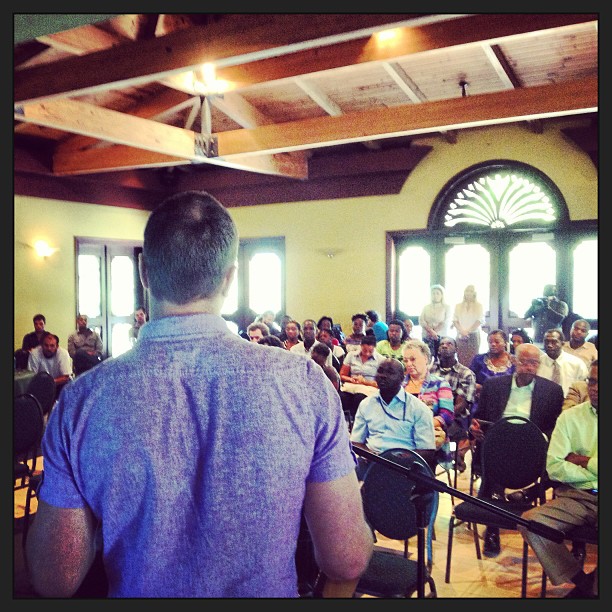What does the future of silviculture look like and can it help address some of the world's most challenging problems?
Looking at forests from a global perspective; who is part of the conversation, where are these discussions and agreements taking place and what are the implications of it all? In spite of obvious challenges, this article looks at the opportunity and possibilities which exist through restoring degraded and deforested areas.

The future of silviculture may be to implement one of humanity’s most vital global initiatives, the restoration of degraded and deforested areas. For those of us seeking a life of challenging adventure, this has all the characteristics of a wicked problem, one so difficult it is hard to even know where to start.
The June 2012 Rio Convention survey from a million concerned global citizens designated “a global forest and land restoration program” the second highest priority for nations today. A higher level of consensus than I expected when I participated. Apparently this is an idea whose time has come.
Last fall in Bonn twenty five nations and hundreds of organizations crystalized this initiative through the Global Partnership on Forest Landscape Restoration (GPFLR), committing to restore 150 million hectares of degraded and deforested lands by 2020. IUCN, the secretariat for the Bonn Challenge, has already secured 50 million hectares in pledges. Commitments of this scale sound like the pledges of overreaching dreamers, but the World Resources Institute Forest and Landscape Restoration Opportunities global mapping exercise identified 2 billion hectares of degraded and deforested land that have a potential for restoration. China, a member, held its 2009 Copenhagen commitment to avoid 2oC by increasing forest coverage by planting 40 million hectares over 2005 levels by 2020, outside of the Bonn Challenge. A lifetime challenge for future silviculturists.
But the Bonn Challenge is a truly wicked problem: a ‘project with incomplete, contradictory and changing requirements’. The mega-funding for 150 million hectares of restoration presents a difficult problem. This was apparent in the annual UN climate conference, when it took place in Doha. Naderev Saño (chief negotiator for the Philippines) made an impassioned plea describing the recent devastation of Typhoon Bopha--SE Asia’s Hurricane Sandy.
“As we … vacillate and procrastinate here, the death toll is rising... heartbreaking tragedies like this are not unique to the Philippines, because the whole world, especially developing countries struggling to address poverty and achieve social and human development, confront these same realities. I appeal to all, please, no more delays, no more excuses. Please, let Doha be remembered as the place where we found the political will to turn things around. Please, let 2012 be remembered as the year the world found the courage, the will to take responsibility for the future we want. I ask of all of us here, if not us, then who? If not now, then when? If not here, then where?”
COP President Al Attiyah of Qatar, COP’s host (Qatar has the world’s highest per capita GDP and highest CO2 emissions), replied to a similar appeal the next day.
“I have plenty of time, I can sit here for one year; it is you who does not have much time."
The rich say ‘not us, not here, not now’ because they fear giant global restoration sinks to remove carbon will be too expensive. Knowing the history of failures, corruption and lack of accountability in developing countries, they are in no hurry to throw money at restoring degraded land.
My example is Haiti, who committed to planting a billion trees last month, to reach the forest cover of Cuba, a regional model of sustainability. The 2009 UNEP Haiti Regeneration Initiative report finds most of Haiti’s 400 plus regeneration initiatives failed. If we can solve Haiti’s wicked problem, we can solve the global problem (the Environmental Prisoners’ Dilemma).
On April 19th, 2013, Haiti celebrated its new billion tree commitment at Haiti’s Earth Day Summit. Haiti Regeneration Initiative’s recommendations for bold, large scale and top down support and for bottom up small scale design by the local community is both met. And the new commitment recognizes the historic threat to new reforestation –previous projects just fed Port Au Prince’s insatiable appetite for charcoal, something that might be solved, at least partially, by more efficient stoves.
The last issue of Silviculture Magazine featured an example of a successful project Planting for Pemba . Over the past seven years, our company’s treeplanters have been among those supporting the local reforestation initiative of Community Forests International (CFI) in Pemba, Tanzania. CFI facilitates local community reforestation through education about trees they could plant. It helps them negotiate local land rights, make a plan, build nurseries, grow seedlings, plant, tend and protect the trees. It also teaches families how to build efficient stoves. But communities and families lead this initiative themselves. Because of CFI’s approach it has successfully facilitated the reversal of deforestation. Yes it is a smaller island, but it has similar problems. And costs were so low that treeplanters in Canada could fund the program through donating some of their earnings.
Surely Qatar would support Haiti’s restoration if those who benefit own the reforestation project, reducing funding costs and ensuring accountability. Good education tools have emerged to help the poorest of the poor develop through reforestation. The Environmental Leadership and Training Initiative (ELTI) is a tropical native species reforestation information clearinghouse recently translated into Spanish and Portuguese.
Enabling successful reforestation on scale is a great opportunity and a great challenge. Because of climate change, regenerating Haiti is urgent. Climate patterns are changing, and consequently, so too is the frequency of windstorms, drought, fire, pests. Because of climate change, resilience will have to be built into forest and community plans.
But yes, there is a future in silviculture and yes, it will give you a satisfying life of challenges.
- Log in to post comments
